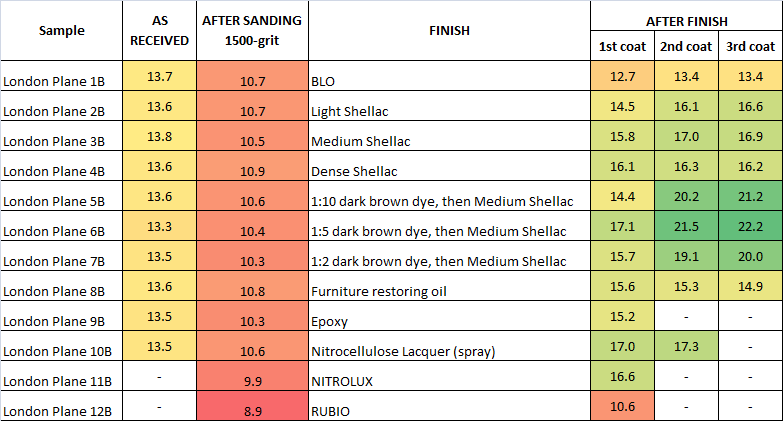This set of tests is aimed at understanding the effect of different finishes on London Plane.
A set of 10 consecutive veneer sheets (from “1” to “10”) were employed, each split into two samples (“A” and “B”); therefore, all samples ending with “A” are just consecutive layers of the initial log and start from very similar PZC values; the same applies for samples “B”.
We tested these finishes:
Boiled Linseed Oil (BLO)
Blonde Dewaxed Shellac “Light” (1 part in 13 parts of Alcohol)
Blonde Dewaxed Shellac “Medium” (2 parts in 13 parts of Alcohol)
Blonde Dewaxed Shellac “Dense” (4 part in 13 parts of Alcohol)
Light dark brown dye (1 part out of 10, the remainder is Alcohol), followed by Medium Shellac.
Medium dark brown dye (1 part out of 5, the remainder is Alcohol), followed by Medium Shellac.
Dense dark brown dye (1 part out of 2, the remainder is Alcohol), followed by Medium Shellac.
Furniture restoring oil
Transparent epoxy resin
Nitrocellulose lacquer (NCL)
VELECA Nitrolux
Rubio Monocoat
It was concluded that:
1) chatoyance remains quite low with clear finishes
2) chatoyance can be increased using dyes (darkening the surface)
3) sanding this veneer (even at high grit) had a negative effect on chatoyance
Tables below summarize the results:


Pictures below show the results on as-received surfaces:










Pictures below show the results on fine-sanded surfaces:









